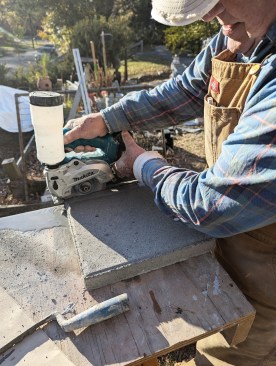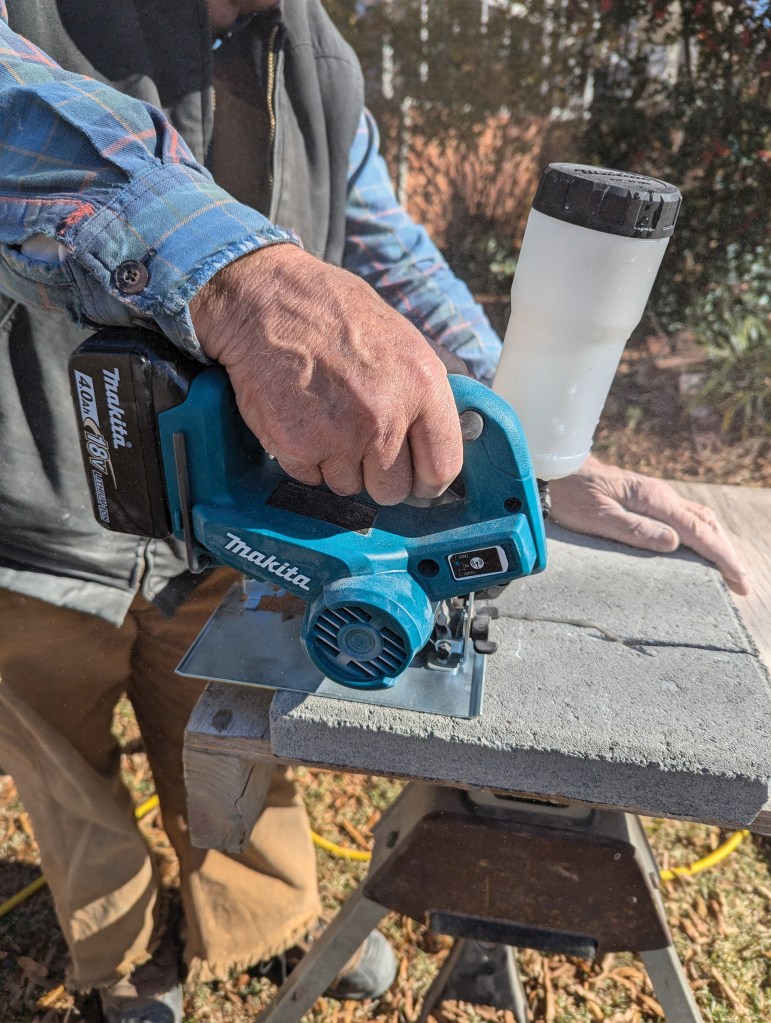Handheld grinders have served as tough, little workhorses on my jobs for decades. I keep two 4½-inch grinders on hand and, to save time, I leave one set up with a metal cutting blade and the other with a diamond masonry blade. With the work I do, my masonry grinder gets the most use. It works great to cut tile, bricks, blocks, stone, concrete, and mortar, but there are two persistent problems. The first is dust. The diamond blade doesn’t cut; it grinds. That produces a cloud of pulverized minerals that makes an unholy mess, presents a long-term health hazard, and creates miserable conditions to work in. The second problem is that controlling the depth of the cut is difficult. Unlike circular saws, standard handheld grinders don’t have a table. Without one, users can’t lock in the depth of the blade and must regulate it by eye.
The Makita XCC01Z 18v LXT Cordless Masonry Saw solves both of those problems. To keep dust down, it has two systems for running water over the spinning blade. The first is a simple gravity system that employs a small, 12-ounce tank attached to the top of the blade guard (1). Water flows from the tank into a tube and over the edge of the blade. By rotating a lever on the blade guard, you can control the rate of flow or cut it off completely between cuts. This system works well, with only one drawback: The tank must be refilled frequently. So, Makita provides an optional hose that can be attached in place of the tank and connected to a garden hose or, with an adapter (not included), to a sink faucet.

Matt Navey
A 12-ounce bottle provides adjustable water flow to keep down dust. For constant water feed, a hose attachment can be used instead. Depth of cut on the compact, 6.6-pound Makita XCCO1Z can be set with its adjustable baseplate.
To regulate the depth of cut, the tool is configured like a standard circular saw with a table that can be locked in place or tilted for beveled cuts (2). A built-in LED makes the cut line easier to see. The saw has a 5-inch diamond blade and a maximum depth of cut of 1¾ inches at 90 degrees. The saw can cut right through granite slabs, brick, and concrete pavers. It goes through batteries quickly, however, so it’s best to have at least two batteries and a charger handy.
The only limitation I found is that the cutter can’t be used on vertical surfaces. Makita makes this clear in the instruction manual in all capital letters: caution: this tool should only be used on horizontal surfaces. This restriction makes the Makita cordless cutter a poor choice for surgical demolition on a tile wall or grinding out the mortar joints in a brick wall for tuck pointing. But, if you need to cut almost any masonry material on a workbench, it’s a great tool to have. The bare tool costs $255. makitatools.com
Keep the conversation going—sign up to our newsletter for exclusive content and updates. Sign up for free
